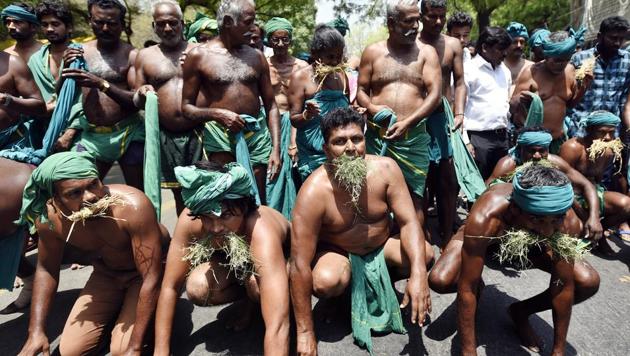Drought is a reality in Tamil Nadu. But no one seems to be taking it seriously
No one seems to be telling Chennai or Bengaluru, for instance, what they should do over the immediate or short term future. Should they go in for water rationing , water cuts ?
The Tamil word panjam dries you up 10 times more than its English equivalent, ‘famine’. There is a remorselessness to panjam, an unrelieved misery. Tiruvalluvar has captured it in his chapter on rain.

When rainclouds go back on what seemed like their word
Ploughmen turn still, sullen their oxen herd
The rains have gone back on ‘their word’ over all of the south of India. Drought is a rock-hard reality in that part of the country today. And it has other parts of India in its grip as well.
Two astonishingly percipient civil servants, both long retired but tireless, brought panjam to a deathly life for me. The first was P Sabanayagam, perhaps the senior most among all retired and serving IAS officers in India, and a formidable one-time chief secretary of Tamil Nadu. He had dropped by, greatly concerned. “The failure of rains has brought us to the doors of a water crisis, a drought, a very severe drought. And no one seems to be taking it seriously.” And then, turning deeply reflective, said: “The rains are not in our hands. But managing what little water we have is our responsibility. But it is the Supreme Court’s order on liquor along the highways that is preoccupying us. ”
The second was Iravatham Mahadevan, the ace administrator now known best for his pioneering work on the Indus Valley script. I rang him on April 14, Tamil New Year’s Day. He acknowledged the new year greeting in one brief sentence and that done, said: “This Tamil year is called Durmukhi, not a reassuring name. But that apart, there is no water. No rain, no water. This year may well see a repeat of the Great Famine of 1876-1877. It is once again really bad. Chennai may well have to go for a partial evacuation.” Mahadevan used a phrase to vivify the drought this year. It is, he said, a ‘thadu varsha panjam’. The phrase stuck in my mind. I turned for elucidation to the widely respected scholar of Tamil and historian AR Venkatachalapathy.
He describes it thus: “Thadu refers to the great famine of 1876-78. It is etched in Tamil collective memory.” Somewhere between 5.5 million and 10 million people died in that famine which ravaged south , south western and parts of central India over two years following the failure of rains.
One hundred and forty years after that landmark famine, are we heading towards something like that panjam again? And not just in southern India but in many other parts of the country as well ?
Lord Lytton (1831-1891) was Viceroy of India during that famine. He is remembered in monarchical studies as the potentate who organised the Great Delhi Durbar in which Queen Victoria was proclaimed Empress of India. The Durbar and the Great Famine cannot be bettered for contrast. The Durbar glowed, the Famine glowered. Relief was , under Lytton’s watch, handled unimaginatively, resulting in the staggering casualties mentioned earlier. This was, essentially, because Lytton did not see the panjam that raged all around him in all its fury.
There is a Lytton syndrome in all of us, state and society together. Barring anxious experts on the weather, on farming ,several NGOs, deeply committed columnists like P Sainath and social activists like Yogendra Yadav of Swaraj Abhiyan, we are in a collective denial about the seriousness of the crisis. The rest of us are so engrossed in today’s equivalent of the Great Durbar , namely, the IPL, as to be totally disconnected with the fact of the drought. And no one in authority is really telling us about the gravity of the crisis.
No one is telling us exactly how much water there is for our needs in the affected areas for the coming weeks. No one seems to be telling Chennai or Bengaluru, for instance, what they should do over the immediate or short term future. Should they go in for water rationing , water cuts? Should water be stopped for ‘ornamental’ and leisure purposes like gardening, swimming, fountains ? Will industries using water and electricity in prodigal quantities go in for a voluntary cut ?
No one is taking us into what may be called ‘drought data’.To alert is not to alarm.
The Sabanayagam-Mahadevan warnings given over private conversations, substantiated by the Venkatachalapathy input, reflect what experts have been saying for the last several months, namely, that panjam is not on its way but is already here. Panjam in all its dire heartlessness.
Gopalkrishna Gandhi is distinguished professor of history and politics, Ashoka University
The views expressed by the author are personal





